The given diagrammatic representation of reflex action shows knee jerk reflex.
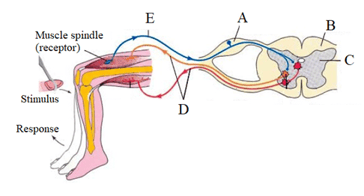
Identify the parts labelled as A to E and select the correct option.
| Dorsal root ganglion | White matter | Grey matter | Afferent pathway | Efferent pathway |
| Dorsal root ganglion | White matter | Grey matter | Efferent pathway | Afferent pathway |
| Ventral root ganglion | Grey matter | White matter | Efferent pathway | Afferent pathway |
| Ventral root ganglion | White matter | Grey matter | Efferent pathway | Afferent pathway |
Important Questions on Control and Co-ordination
The diagram is given below the internal structure of a spinal cord depicting a phenomenon. Study the diagram and answer the questions.
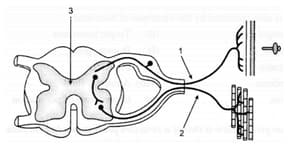
Mention two ways by which the spinal cord is protected in our body.
The diagram is given below the internal structure of a spinal cord depicting a phenomenon. Study the diagram and answer the questions.
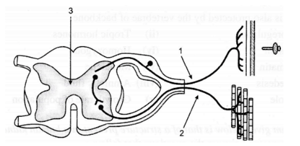
Name the parts numbered 1, 2 and 3.
Given below are sets of five terms each. Rewrite the terms in correct order in a logical sequence beginning with the first word that is underlined:
Stimulus, Response, Receptor, Effector, Spinal cord
The diagram is given below the internal structure of a spinal cord depicting a phenomenon. Study the diagram and answer the questions.
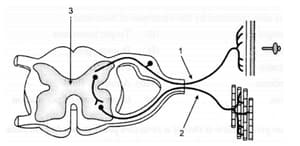
How does the arrangement of neurons in the spinal cord differ from that of the brain?
Choose the ODD one out from the following terms given and name the CATEGORY to which the others belong:
Choose the correct answer from the four options given below:
Which of the following is not a natural reflex action?
Redraw, complete and label the diagram given below which relates to the reflex arc.
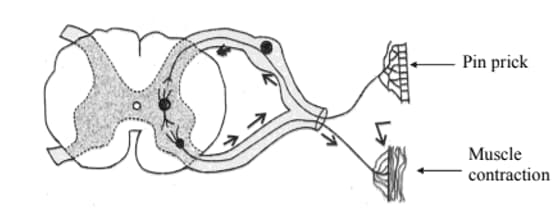
The diagram given alongside shows the internal structure of a spinal cord depicting phenomena. Study the diagram and answer the questions:
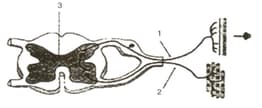
Name the phenomenon that is depicted in the diagram. Define the phenomenon.

